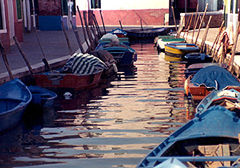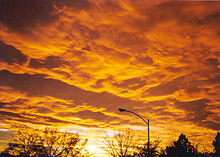
Home Page
About Page
Photo Page
What's New Page
Contact Page
Favorite Links
Slide Show
Info on Thailand
Custom2 Page
Guest Book Page
Photo2 Page
|

General Info on Thailand - My Beloved Country
About Thailand
A brief Introduction
Thailand is a Southeast Asian, predominantly Buddhist kingdom almost equidistant between India and China. For centuries known by outsiders as Siam, Thailand has been something of a Southeast Asian migratory, cultural and religious crossroads.
With an area of some 510,000 square kilometres and a population of some 61 millions Thailand is approximately the same size as France. Thailand shares borders with Myanmar to the west and the north, Laos to the northeast, Cambodia to the east, and Malaysia the south.
.
A History in brief
Archeological discoveries around the northeast hamlet of Ban Chiang suggest that the worldÔÇÖs oldest Bronze Age civilisation was flourishing in Thailand some 5,600 years ago.
Successive waves of immigrants, including Mons, Khmers and Thais, gradually entered the Land mass now known as Thailand, most slowly travelling along fertile river valleys from Southern China. By the 11 th and 12 th centuries. Khmers ruled much of the area from Angkor.
By the early 1200s, Thais had established small northern city states in Lanna, Phayao and Sukhothai. In 1238, two Thai chieftains rebelled against Khmer suzerainty and established the first truly independent Thai Kingdom in Sukhothai (literally, Dawn of Happiness).
Sukhuthai saw the ThaisÔÇÖ gradual expansion throughout the entire Chao Phraya River basin, the establishement of Theravada Buddhism as the paramount Thai religion, the creation of the Thai alphabet and the first expression of nascent Thai art forms, including painting, sculpture, architecture and literature.
Sukhothai declined during the 1300s and eventually became a vassal state of Ayuddhaya, a dynamic young kingdom further south in the Chao Phraya River valley. Founded in 1350 , Ayuddhaya remained the Thai capital until 1767 when it was destroyed by Burmese invaders.
During AyuddhayaÔÇÖs 417 years as the capital, under the rule of 33 kings, the Thais brought their distinctive culture to full fruition, totally rid their lands of Khmer presence and fosteres contact with Arabian, Indian, Chinese, Japanese and European powers.
Ayuddhaya ÔÇśs destruction was a severe a blow to Thais as the loss of Paris or London would have been to the French or British. However, a Thai revival occurred within a few months and the Burmese were expeled by King Taksin who later made Thon Buri his capital in 1782, the frist King of present Chakri dynasty, Rama I, established his new capital on the site of riverside hamlet called Bangkok ( Village of wild plums).
Two Chakri monarches, Mongkut (Rama IV) who reigned between 1851 and 1868, and his son Chulalongkorn (Rama V, 1868-1910) saved Thailand from western colonization through adroit diplomacy and selective modernization.
Today, Thiland is a constitutional monarchy. Since 1932, Thai kings including the present monarch H. M. King Bhumibol Adulyadej have exercised their legislative powers through a national assembly, their executive powers through a cabinet headed by a prime ministry, and their juridical powers through law courts.
Geography
Geographically speaking, Thailand is divided into six major regions: the mountainious north where elephants work forests and winter temperatures are sufficiently cool to permit cultivation of temperature fruits such as strawberries and peaches ; the sprawling northeast plateau, largely bordered by the Mekhong River, where the worldÔÇÖs oldest Bronze Age civilisation florished some 5,000 years ago ; the central plain, one of the worldÔÇÖs most fertile rice and fruit-growing areas ; the eastern coastal plain, where fine sandy beaches support the growth of summer resorts ; western mountains and valleys, suitable for the development of hydro-electric power ; and the peninsular south where arresting scenic beauty complements economically vital tin mining, rubber cultivation and fishing.
Climate
Thailand enjoys a tropical climate with distinct seasons-summer March through May, rainy plenty of sunshine from June to September and cool from October through February. The average annual temperature is 28 C (83 F), ranging, in Bangkok, for example, from 30 C in April to 25 C in December.
People
Throughout her long history, Thailand has gently absorbed immigrants. Many were skilled as writers, painters, sculptors, dancers, musicians and architectures, and helped enrich indigenous culture.
People inhabiting Thailand today share rich ethnic diversit mainly Thai, Mon, Khmer, Laotian, Chinese, Malay, Persian and Indian stock with the result that there is no typically Thai physiognomy, or physique. There are petite Thais, round-faced Thais, dark-skinned Thais and light-skinned Thais.
Some 80% OF ALL Thais are connected in some way with agriculture which, in varying degrees, influences and in influenced by the religious ceremonies and festivals that helps make Thailand such a distinctive country.
|
|
Thailand: Time is about 7 hours ahead of Greenwich Mean time (GMT + 7)
Language
Thai language is tonal with each syllable having five different tones ( high, rising, falling, middle , low). The meanings relate to the level of the tones used. Verbs have no tenses and most words are monosyllabic. There are also a number of regional dialects which can be confusing even to the locals.
Although English is not generally spoken, many Thai students understand and speak English to a certain degree and they could be helpful during your stay in Bangkok
|
|
THAI CUISINE IS SUPERB!
Thai food ranks as one of the worldĺs great culinary arts. Today thousands of Thai restaurants are to be found around the world and the cuisine has earned a deserved a reputation for its creativity, variety and, of course, superb taste.
As the Thai food is considered to be particularly, special conferences and food fairs will be held to highlight this, including information on the use of herbs in Thai dishes. The theme ô Thai Food for the worldö was chosen for the first food conference and this will now become an annual event to be held. Additionally, regional Thai food promotions will be organized.
In Thailand, visitors will additionally have the opportunity to learn the Art of Thai cooking at special courses held in Bangkok and major resort areas.
Thai cuisine is very distinctive, thanks to liberal use of spicy ingredients and combines the best of Chinese and Indian culinary traditions noodles, curries, sweet and sour dishes, lengthily cooked and fast-cooked ingredients, exotic spicies and condiments while retaining its own very special character.
|
 |
A Glimpse of Bangkok- Capital City
Many first-time visitors to Bangkok have little idea of what they will actually encounter. Bangkok metropolis, accommodating around eight million residents, is a sophisticated , fast-growing and on occasions, traffic-clogged city.
Referred to today as the City of Angles ( Krung Thep in Thai) Bangkok was once called the Venice of the East because of its many canals. Although many canals have been filled-in, taking a way some of the cityĺs old-world charm, it is still one of the most intriguing places worth visiting in Southeast Asia. Many visitors keep coming back to the city, some for business, some for vacations and some even to settle down here. Without doubt, modern-day Bangkok is a tourist mecca of the East offering a greater variety of things to see and do than any other city in Southeast Asia
|
|
RELIGION
Theravada Buddhism in the professed religion of more than 90% of all Thais, and casts strong influences on daily life.
Buddhism first appeared in Thailand during the 3 rd Century B.C. at Nakorn Pathom, site of the world tallest Buddhist monument , after the indian Buddhist Emperor Asoka. (267-277 B.C.) despatched missionaries to Southeast Asia to propagate the newly established faith.
Besides, moulding morality, providing social cohesion and offering spiritual succour, Buddhism provided incomparable artistic impetus, in common with medieval European cathedrals, Thailand Ĺs innumerable multiroofed temples inspired major artistic creation.
Another reason for Buddhism Ĺs trength is that there are few Thai Budhist families in which at least one make member has not studied the Buddha Ĺs teaching in a monastery. It has long been a custom for Buddhist males over twenty , once in their lifetime, to be ordained for a period ranging from 5 days to 3 months. This usually occurs during the annual Rains Retreat, a 3-month period during the Rains Season when all monks forego travel and stay inside their monasteries.
Besides sustaining monastic communities. Thai temples have traditionally served other purposes the village hostelry, village news, employment and information agency, a school, hospital, dispensary and community centreto give them vital roles in Thai society.
The Thais have always subscribed to the ideal of religious freedom. Thus sizeable minorities of Muslims, Christians, Hindus and Sikhs freely pursue their respective faiths.
|
|
ART IN THAILAND
Sorry ! Info not available right now!
|
|
THAI CULTURE
Sorry ! Info not available right now.
|
|
|
